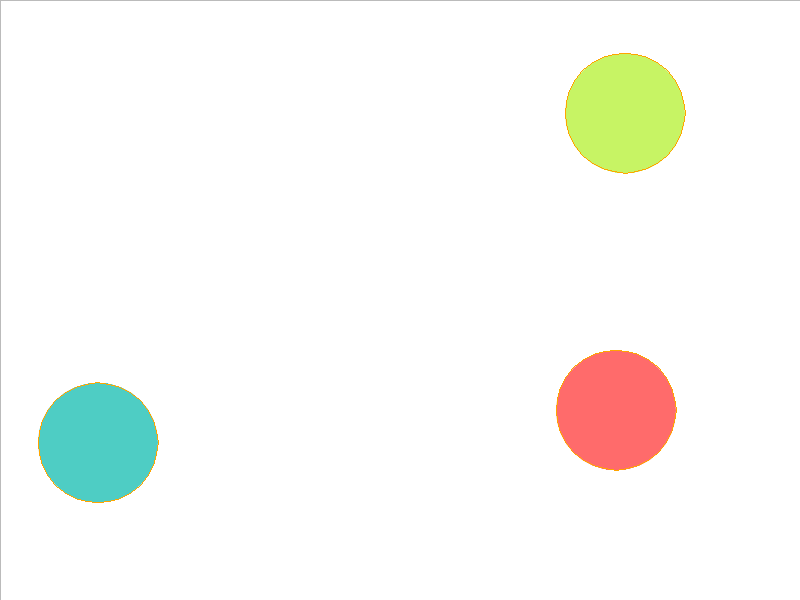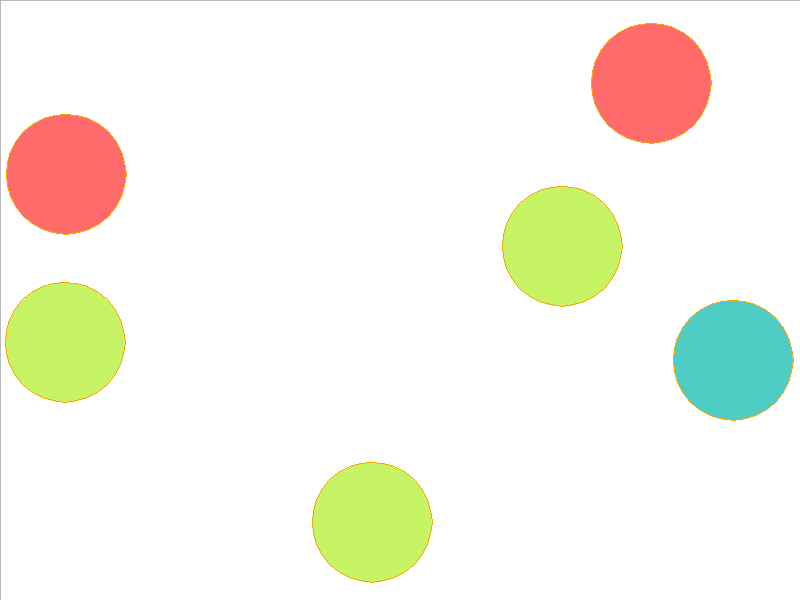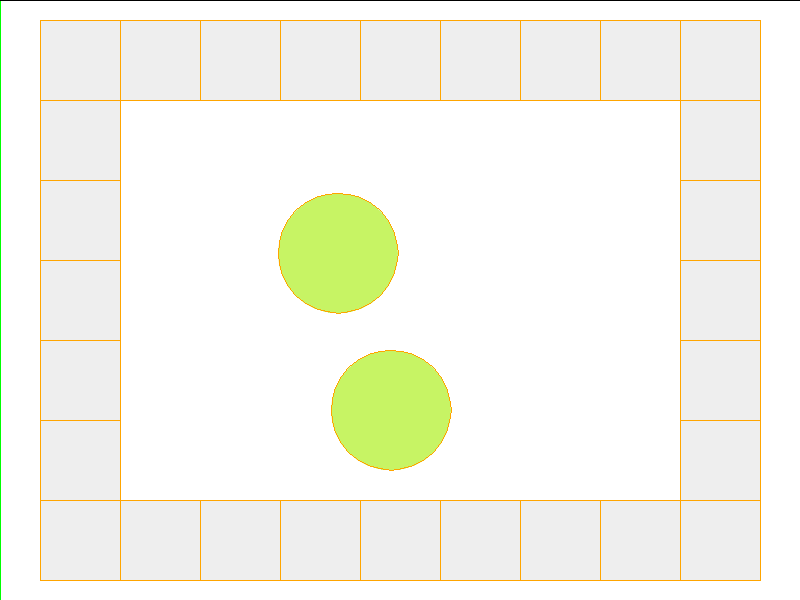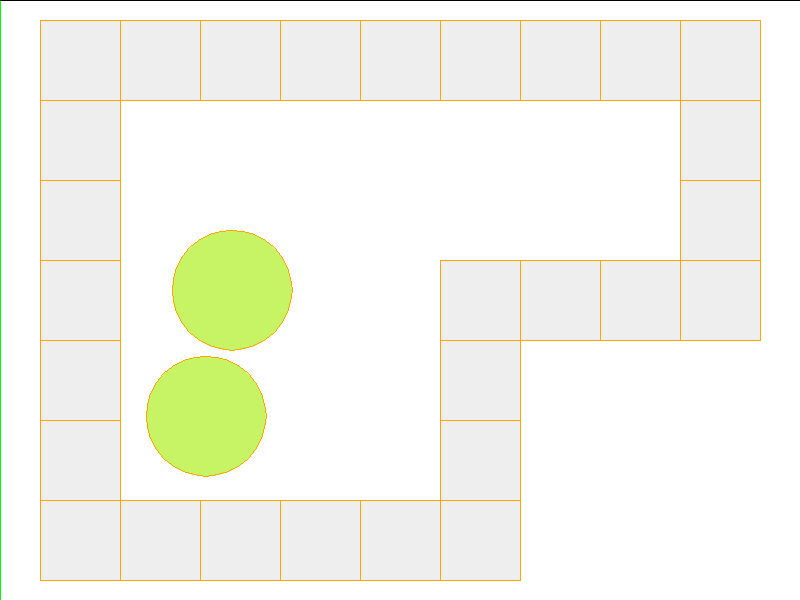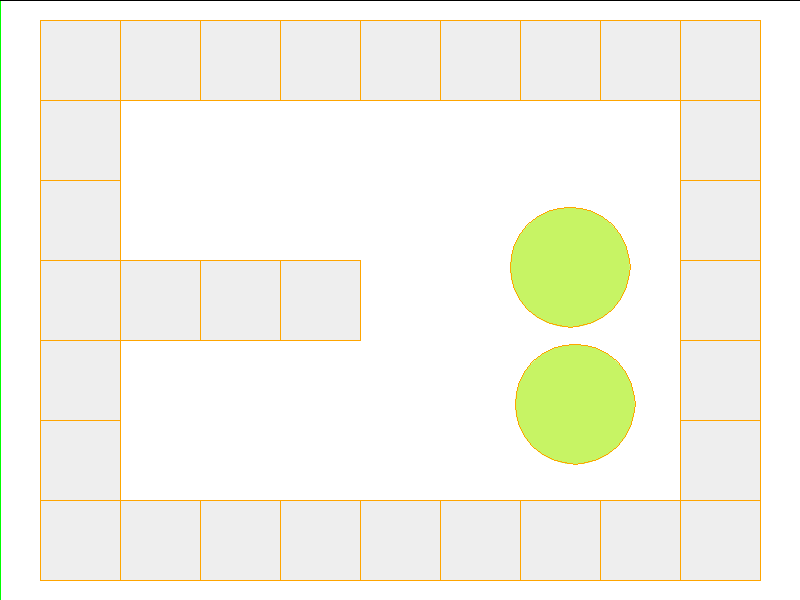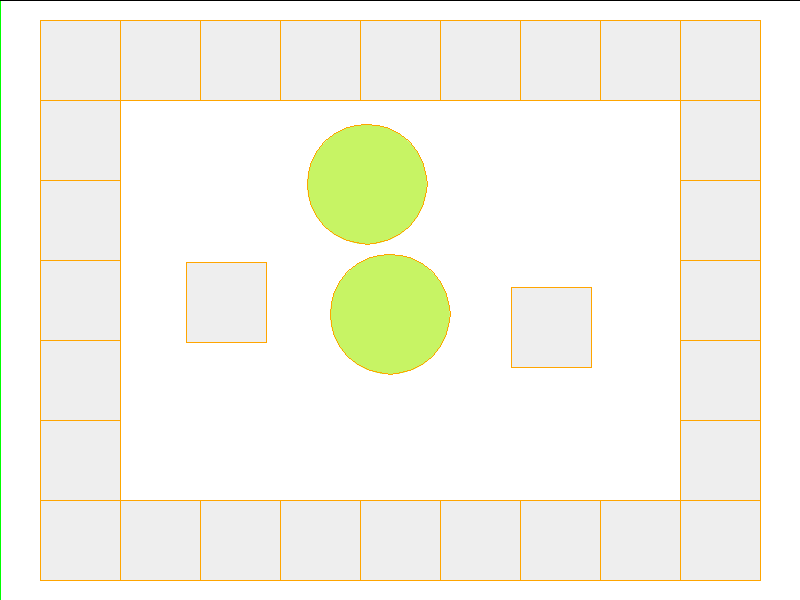This repository contains the code described in https://arxiv.org/abs/1612.00341, accepted to ICLR 2017.
Project website: http://mbchang.github.io/npe
We present the Neural Physics Engine (NPE), a framework for learning simulators of intuitive physics that naturally generalize across variable object count and different scene configurations. We propose a factorization of a physical scene into composable object-based representations and a neural network architecture whose compositional structure factorizes object dynamics into pairwise interactions. Like a symbolic physics engine, the NPE is endowed with generic notions of objects and their interactions; realized as a neural network, it can be trained via stochastic gradient descent to adapt to specific object properties and dynamics of different worlds. We evaluate the efficacy of our approach on simple rigid body dynamics in two-dimensional worlds. By comparing to less structured architectures, we show that the NPE's compositional representation of the structure in physical interactions improves its ability to predict movement, generalize across variable object count and different scene configurations, and infer latent properties of objects such as mass.
If this paper is helpful, or you use our code, please cite us!
@article{chang2016compositional,
title={A Compositional Object-Based Approach to Learning Physical Dynamics},
author={Chang, Michael B and Ullman, Tomer and Torralba, Antonio and Tenenbaum, Joshua B},
journal={arXiv preprint arXiv:1612.00341},
year={2016}
}
Below are some predictions from the model:
To install lua dependencies, run:
luarocks install pl
luarocks install torchx
luarocks install nn
luarocks install nngraph
luarocks install rnn
luarocks install gnuplot
luarocks install paths
luarocks install jsonTo install js dependencies, run:
cd src/js
npm installNOTE: The code in this repository is still in the process of being cleaned up.
The code to generate data is adapted from the demo code in matter-js.
This is an example of generating 50000 trajectories of 4 balls of variable mass over 60 timesteps. It will create a folder balls_n4_t60_s50000_m in the data/ folder.
> cd src/js
> node demo/js/generate.js -e balls -n 4 -t 60 -s 50000 -mThis is an example of generating 50000 trajectories of 2 balls over 60 timesteps for wall geometry "U." It will create a folder walls_n2_t60_s50000_wU in the data/ folder.
> cd src/js
> node demo/js/generate.js -e walls -n 2 -t 60 -s 50000 -w UIt takes quite a bit of time to generate 50000 trajectories, so 200 trajectories is enough for debugging purposes. In that case you may want to change the flags accordingly in the examples below.
Trajectory data is stored in a .json file. You can visualize the trajectory by opening src/js/demo/render.html in your browser and passing in the .json file.
This is an example of training the model for the balls_n4_t60_s50000_m dataset. The model checkpoints are saved in src/lua/logs/balls_n4_t60_ex50000_m__balls_n4_t60_ex50000_m_layers5_nbrhd_rs_fast_lr0.0003_modelnpe_seed0. If you are comfortable looking at code that has not been cleaned up yet, please check out the flags in src/lua/main.lua.
> cd src/lua
> th main.lua -layers 5 -dataset_folders "{'balls_n4_t60_ex50000_m'}" -nbrhd -rs -test_dataset_folders "{'balls_n4_t60_ex50000_m'}" -fast -lr 0.0003 -model npe -seed 0 -name balls_n4_t60_ex50000_m__balls_n4_t60_ex50000_m_layers5_nbrhd_rs_fast_lr0.0003_modelnpe_seed0 -mode expHere is an example of training on 3, 4, 5 balls of variable mass and testing on 6, 7, 8 balls of variable mass, provided that those datasets have been generated. The model checkpoints are saved in src/lua/logs/balls_n3_t60_ex50000_m,balls_n4_t60_ex50000_m,balls_n5_t60_ex50000_m__balls_n6_t60_ex50000_m,balls_n7_t60_ex50000_m,balls_n8_t60_ex50000_m_layers5_nbrhd_rs_fast_lr0.0003_modelnpe_seed0.
> cd src/lua
> th main.lua -layers 5 -dataset_folders "{'balls_n3_t60_ex50000_m','balls_n4_t60_ex50000_m','balls_n5_t60_ex50000_m'}" -nbrhd -rs -test_dataset_folders "{'balls_n6_t60_ex50000_m','balls_n7_t60_ex50000_m','balls_n8_t60_ex50000_m'}" -fast -lr 0.0003 -model npe -seed 0 -name balls_n3_t60_ex50000_m,balls_n4_t60_ex50000_m,balls_n5_t60_ex50000_m__balls_n6_t60_ex50000_m,balls_n7_t60_ex50000_m,balls_n8_t60_ex50000_m_layers5_nbrhd_rs_fast_lr0.0003_modelnpe_seed0 -mode expHere is an example of training on "O" and "I" wall geometries and testing on "U" and "I" wall geometries, provided that those datasets have been generated. The model checkpoints are saved in src/lua/logs/walls_n2_t60_ex50000_wO,walls_n2_t60_ex50000_wL__walls_n2_t60_ex50000_wU,walls_n2_t60_ex50000_wI_layers5_nbrhd_rs_fast_lr0.0003_modelnpe_seed0.
> cd src/lua
> th main.lua -layers 5 -dataset_folders "{'walls_n2_t60_ex50000_wO','walls_n2_t60_ex50000_wL'}" -nbrhd -rs -test_dataset_folders "{'walls_n2_t60_ex50000_wU','walls_n2_t60_ex50000_wI'}" -fast -lr 0.0003 -model npe -seed 0 -name walls_n2_t60_ex50000_wO,walls_n2_t60_ex50000_wL__walls_n2_t60_ex50000_wU,walls_n2_t60_ex50000_wI_layers5_nbrhd_rs_fast_lr0.0003_modelnpe_seed0 -mode exp Be sure to look at the command line flags in main.lua for more details. You
may want to change the number of training iterations if you are just debugging
. The code defaults to cpu, but you can switch to gpu with the -cuda flag.
This is an example of running simulations using trained model that was saved in src/lua/logs/balls_n4_t60_ex50000_m__balls_n4_t60_ex50000_m_layers5_nbrhd_rs_fast_lr0.0003_modelnpe_seed0.
> cd src/lua
> th eval.lua -test_dataset_folders "{'balls_n4_t60_ex50000_m'}" -name balls_n4_t60_ex50000_m__balls_n4_t60_ex50000_m_layers5_nbrhd_rs_fast_lr0.0003_modelnpe_seed0 -mode simThis is an example of running simulations using trained model that was saved in src/lua/logs/balls_n3_t60_ex50000_m,balls_n4_t60_ex50000_m,balls_n5_t60_ex50000_m__balls_n6_t60_ex50000_m,balls_n7_t60_ex50000_m,balls_n8_t60_ex50000_m_layers5_nbrhd_rs_fast_lr0.0003_modelnpe_seed0.
> cd src/lua
> th eval.lua -test_dataset_folders "{'balls_n3_t60_ex50000_m','balls_n4_t60_ex50000_m','balls_n5_t60_ex50000_m','balls_n6_t60_ex50000_m','balls_n7_t60_ex50000_m','balls_n8_t60_ex50000_m'}" -name balls_n3_t60_ex50000_m,balls_n4_t60_ex50000_m,balls_n5_t60_ex50000_m__balls_n6_t60_ex50000_m,balls_n7_t60_ex50000_m,balls_n8_t60_ex50000_m_layers5_nbrhd_rs_fast_lr0.0003_modelnpe_seed0 -mode simThis is an example of running simulations using trained model that was saved in src/lua/logs/walls_n2_t60_ex50000_wO,walls_n2_t60_ex50000_wL__walls_n2_t60_ex50000_wU,walls_n2_t60_ex50000_wI_layers5_nbrhd_rs_fast_lr0.0003_modelnpe_seed0.
> cd src/lua
> th eval.lua -test_dataset_folders "{'walls_n2_t60_ex50000_wO','walls_n2_t60_ex50000_wL','walls_n2_t60_ex50000_wU','walls_n2_t60_ex50000_wI'}" -name walls_n2_t60_ex50000_wO,walls_n2_t60_ex50000_wL__walls_n2_t60_ex50000_wU,walls_n2_t60_ex50000_wI_layers5_nbrhd_rs_fast_lr0.0003_modelnpe_seed0 -mode simYou can visualize the predictions with src/js/demo/render.html and passing in the .json files in src/lua/logs/<experiment_name>/<dataset_name>predictions/<jsonfile>.
This is an example of running mass inference using trained model that was saved in src/lua/logs/balls_n4_t60_ex50000_m__balls_n4_t60_ex50000_m_layers5_nbrhd_rs_fast_lr0.0003_modelnpe_seed0.
> cd src/lua
> th eval.lua -test_dataset_folders "{'balls_n4_t60_ex50000_m'}" -name balls_n4_t60_ex50000_m__balls_n4_t60_ex50000_m_layers5_nbrhd_rs_fast_lr0.0003_modelnpe_seed0 -mode minfThis is an example of running mass inference using trained model that was saved in balls_n3_t60_ex50000_m,balls_n4_t60_ex50000_m,balls_n5_t60_ex50000_m__balls_n6_t60_ex50000_m,balls_n7_t60_ex50000_m,balls_n8_t60_ex50000_m_layers5_nbrhd_rs_fast_lr0.0003_modelnpe_seed0.
> cd src/lua
> th eval.lua -test_dataset_folders "{'balls_n6_t60_ex50000_m','balls_n7_t60_ex50000_m','balls_n8_t60_ex50000_m','balls_n3_t60_ex50000_m','balls_n4_t60_ex50000_m','balls_n5_t60_ex50000_m'}" -name balls_n3_t60_ex50000_m,balls_n4_t60_ex50000_m,balls_n5_t60_ex50000_m__balls_n6_t60_ex50000_m,balls_n7_t60_ex50000_m,balls_n8_t60_ex50000_m_layers5_nbrhd_rs_fast_lr0.0003_modelnpe_seed0 -mode minfThis is an example of running mass inference using trained model that was saved in src/lua/logs/walls_n2_t60_ex50000_wO,walls_n2_t60_ex50000_wL__walls_n2_t60_ex50000_wU,walls_n2_t60_ex50000_wI_layers5_nbrhd_rs_fast_lr0.0003_modelnpe_seed0.
> cd src/lua
> th eval.lua -test_dataset_folders "{'walls_n2_t60_ex50000_wO','walls_n2_t60_ex50000_wL','walls_n2_t60_ex50000_wU','walls_n2_t60_ex50000_wI'}" -name walls_n2_t60_ex50000_wO,walls_n2_t60_ex50000_wL__walls_n2_t60_ex50000_wU,walls_n2_t60_ex50000_wI_layers5_nbrhd_rs_fast_lr0.0003_modelnpe_seed0 -mode minfThis project was built with Torch7, rnn, and matter-js. A big thank you to these folks.
We thank Tejas Kulkarni for insightful discussions and guidance. We thank Ilker Yildirim, Erin Reynolds, Feras Saad, Andreas Stuhlmuller, Adam Lerer, Chelsea Finn, Jiajun Wu, and the anonymous reviewers for valuable feedback. We thank Liam Brummit, Kevin Kwok, and Guillermo Webster for help with matter-js. M. Chang was graciously supported by MIT’s SuperUROP and UROP programs.
